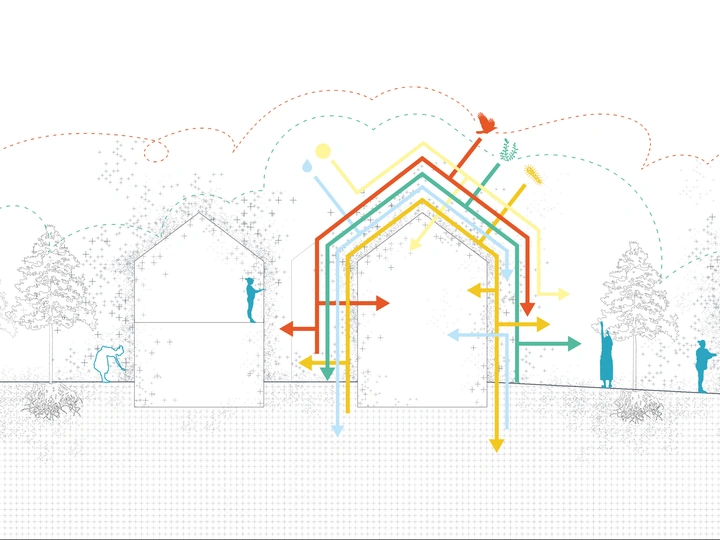ECOLOPES VR Environment Team

Lee Gafter
Francesca Mosca
Katia Perini
Assaf Shwartz
Multi-disciplinary team of architects, urban designers , and ecologists. The combined research focus is on design strategies towards the transformation of the built environment, by linking sustainable architecture and urban planning, with nature-based solutions. Main goal is to promote biodiversity and urban nature within urban development, landscape architecture and architectural projects.
Explorations include plant dynamics, and their response to abiotic and biotic stress in urban ecosystems, in relation to building design. Important factors also include the understanding and record of human responses to novel building envelopes, i.e., through the introduction of plants and animals.
Team members are incorporating the above research endeavors through their academic positions as post-doctoral students and faculty members. These include research and teaching in many aspects of life sciences, from molecules to plants and animals to ecosystems and landscapes, as well as architecture and town planning. The relevant departments are the departments of Architecture and Town Planning, as well as departments relating to the Environment, and Life Science.
Urbanization negatively impacts ecosystems, causing loss of biodiversity, while contributing to climate change, as well as having bad consequences to human health and well-being. To reduce the environmental impact of cities, current designs aim towards the integration of 'green strategies’, but the focus is mainly anthropocentric. Other species are not taken into consideration during the planning process, although they play a central role in increasing biodiversity.
In ECOLOPES we propose a radical change for city development: instead of minimizing the negative impact of urbanization on nature, we aim that urbanization is planned and designed in a way that nature, including humans, co-evolve within the city. We envisage a radically new integrated ecosystem approach to architecture that focuses equally on humans, plants, animals, and microbiota, through the design of the building envelope.
The objective of this installation is to understand how different types of urban settings and scenarios, which include greenery and animal species, are perceived by the people, and how these affect their well-being. The route is organized into different sections, including experimental, educational, and dissemination activities of ECOLOPES. First, an introduction, which illustrates the importance of an ecological approach in urban settings and explains the objectives of the immersive experience in Virtual Reality (VR). This section includes visual aids, such as posters and video projection. A second part, where through VR, participants (two at a time) immerse themselves in 5 designs with varying characteristics (presence of greenery and animals). The satisfaction and aesthetic evaluation are monitored and measured through a questionnaire, before/after the experience.
The fundamental aim of this installation is to raise awareness in multi-species design, by investigating the potential benefits of nature in human well-being, through the experience of a multi-species envelope.